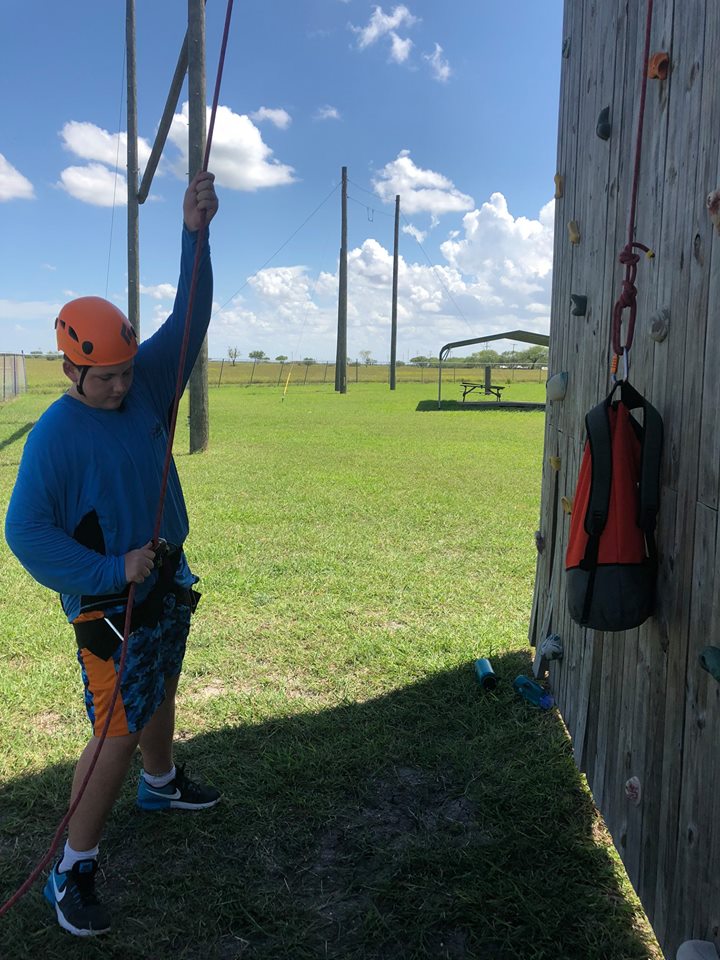Rock climbing and obstacle courses are a big part of Youth Odyssey. They are one of many activities we do during our programs. One of the exciting things we do in our programs is take kids to our ropes course. Our course contains many different High elements, which are obstacles up off the ground. Anytime we take participants through climbing obstacles up off the ground, we use belay devices. Belay devices come in many different designs and configurations. Choosing the correct belay device is important depending on what obstacle we are going through.
Basics of Belay Devices
Belay devices are one of several types of equipment we use at our obstacle course. They give our facilitators the ability to assist and keep our participants safe during climbs. We use a variety of different devices, and typically it's just a matter of personal preference when deciding which one to use. Some belay devices have added features that can make the belaying experience easier, and more enjoyable.
Belay - A running of rope through an object to secure it. "Secure a climber with belayed rope"


Belaying 101
Tubular belay devices are usually our go-to when we are running our ropes course. They are very simple to use, and it gives us more control and feel of the rope without the assistance. It’s important to choose the right piece of equipment that is not only right for the job, but also a tool that you are familiar with. Find out where you are going to be belaying, and chose the best device for that environment. Never forget to scout the area before performing a climb and make sure you familiarize yourself with the area. Plan a climb ahead of time and know how many people are going. Having the right equipment is important, but making sure everyone who is belaying has one is also important. And never forget that someone life is attached to the end of the line. Practice extreme safety when performing and climbing, regardless of experience level. And always have a first aid kid or a med kit available whenever you’re in the outdoors. Knowing the steps is crucial, here is a link that can give a demonstration of the P.B.U.S. technique we use at our ropes course.
DISCLAIMER: The information in the blog does not certify or guarantee that you are ready to belay. Belaying is performed by trained professionals and should not be attempted by everyone. Seek additional professional help if belaying is something of interest.
Belay Technique: P.B.U.S.
Pull
Pull the slack out through the belay device with the brake hand. Also pull down on the climbers end of the rope bringing it to the belay device.
Brake
After you pull the slack out through the belay device, go into brake position. Brake position is holding the rope low against your hip with your brake hand (dominant hand).
Under
This phase is the transfer phase, and it's important to pay close attention to hand placement. Bring your non-brake hand down below your brake hand. Once there, grab the rope with your non-brake hand securely.
Slide
Once your non-brake hand placement is established, it now becomes your break hand momentarily. Next slide your original brake hand up close to your belay device. Be careful not to get your hand or fingers in the belay device. Lastly once you reach this point, your original brake hand will re-establish the brake, and the whole process repeats.

Take away
As you can see there are various types of belaying devices, each with a slightly different operating style. But all of them are just as efficient at assisting in a climb. What it comes down to, is which device is best for the style of belaying you are using. Here at our ropes course we use the P.B.U.S. method. We like this method because its efficient, and adds extra safety to the climber at all times. But you never know what you might like. So visit the links or come up to the ropes course and take a look at everything we discussed first hand. We are always eager to find volunteers with a passion for the outdoors and youth development.
DISCLAIMER: The information in the blog does not certify or guarantee that you are ready to belay. Belaying is performed by trained professionals and should not be attempted by everyone. Seek additional professional help if belaying is something of interest.






